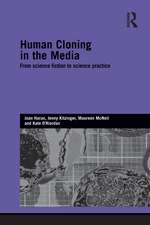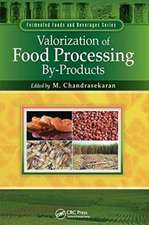Handbook of Batch Process Design
Editat de P.N. Sharratten Limba Engleză Hardback – 30 sep 1997
| Toate formatele și edițiile | Preț | Express |
|---|---|---|
| Paperback (1) | 1218.83 lei 6-8 săpt. | |
| SPRINGER NETHERLANDS – 21 sep 2011 | 1218.83 lei 6-8 săpt. | |
| Hardback (1) | 1229.10 lei 6-8 săpt. | |
| SPRINGER NETHERLANDS – 30 sep 1997 | 1229.10 lei 6-8 săpt. |
Preț: 1229.10 lei
Preț vechi: 1498.90 lei
-18% Nou
Puncte Express: 1844
Preț estimativ în valută:
235.19€ • 242.64$ • 196.27£
235.19€ • 242.64$ • 196.27£
Carte tipărită la comandă
Livrare economică 27 martie-10 aprilie
Preluare comenzi: 021 569.72.76
Specificații
ISBN-13: 9780751403695
ISBN-10: 0751403695
Pagini: 320
Ilustrații: XIV, 320 p.
Dimensiuni: 155 x 235 x 25 mm
Greutate: 0.77 kg
Ediția:1997
Editura: SPRINGER NETHERLANDS
Colecția Springer
Locul publicării:Dordrecht, Netherlands
ISBN-10: 0751403695
Pagini: 320
Ilustrații: XIV, 320 p.
Dimensiuni: 155 x 235 x 25 mm
Greutate: 0.77 kg
Ediția:1997
Editura: SPRINGER NETHERLANDS
Colecția Springer
Locul publicării:Dordrecht, Netherlands
Public țintă
ResearchCuprins
1 Chemicals manufacture by batch processes.- 1.1 Introduction.- 1.2 Industrial background.- 1.3 Reasons for the use of batch processing.- 1.4 Batch process design for fine and speciality chemical production.- 1.5 Plant design.- 1.6 Summary.- References.- 2 Scheduling and simulation of batch processes.- 2.1 Introduction.- 2.2 Batch process features.- 2.3 The scheduling problem.- 2.4 Batch process simulation.- 2.5 Design implications.- References.- 3 Solvents in chemicals production.- 3.1 Introduction.- 3.2 Solvent properties.- 3.3 Solubility.- 3.4 Solvent effects on reactions.- 3.5 Solvent recovery.- 3.6 Solvent destruction.- 3.7 Conclusion.- 3.8 Nomenclature.- References.- 4 Agitation.- 4.1 Agitator selection.- 4.2 Calculation of agitator power, discharge flow and mixing time.- 4.3 Power and circulation in non-Newtonian fluids.- 4.4 Design to disperse solid particles.- 4.5 Design for two or more liquid phases.- 4.6 Design for dispersing gas.- 4.7 Design for heat transfer.- 4.8 Nomenclature.- References.- 5 Mixing and the selectivity of fast chemical reactions.- 5.1 The problem.- 5.2 Mixing mechanisms and modelling.- 5.3 Applications.- 5.4 Extensions.- 5.5 Concluding remarks.- 5.6 Nomenclature.- References.- 6 Batch filtration of solid—liquid suspensions.- 6.1 Introduction.- 6.2 Filtration process fundamentals.- 6.3 Batch operated filtration machinery.- 6.4 Nomenclature.- References.- 7 Design and engineering of a batch plant.- 7.1 Introduction.- 7.2 Project definition.- 7.3 Project strategy.- 7.4 Project organization.- 7.5 ‘Fast track’ projects.- 7.6 Regulations and other controls.- 7.7 Design techniques.- 7.8 Layout considerations.- 7.9 Plant relocation/reuse of existing equipment.- 7.10 Modular plant.- 8 Control.- 8.1 Introduction.- 8.2 Control of continuous processes.- 8.3 Control of batch processes.- 8.4 Batch control systems — structure and functions.- 8.5 Computer control.- 8.6 Procedural control.- 8.7 Acknowledgements.- References.- 9 Hazards from chemical reactions and flammable materials in batch reactor operations.- 9.1 Introduction.- 9.2 Hazard identification.- 9.3 Chemical reaction hazards.- 9.4 Fire and explosion hazards.- 9.4 Conclusions.- References.- 10 Environmental protection and waste minimization.- 10.1 Introduction.- 10.2 Batch reactor waste minimization.- 10.3 Equipment for the production of solid products.- 10.4 Fugitive and other minor emissions.- 10.5 Cleaning wastes.- 10.6 Waste treatment and solvent management.- 10.7 Environmental protection.- 10.8 Conclusions.- References.- 11 Future developments in batch process design and technology.- 11.1 Influences for and against change.- 11.2 New technologies.- 11.3 New processes.- 11.4 New design methods.- 11.5 New skill requirements.- References.















